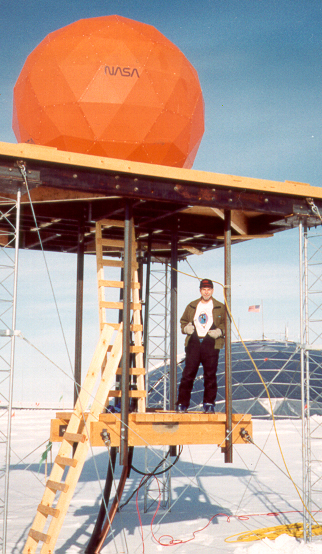Goddard Space Flight Center, Greenbelt, Maryland 20771
ENGINEERING COLLOQUIUM
Monday, March 19, 2007 / 3:30 PM, Building 3 Auditorium

Michael Comberiate
"Engineering on a Shoestring"
ABSTRACT -- There’s a major difference between a pioneering First and a routine repeat.
Isn’t this the mission of NASA – to go where no man has gone before? If it’s been done before, let someone else repeat it. NASA was created to push the boundaries. This kind of job is "out-of-the-box" by definition. There’s very little process defined on how to do it the first time; and that’s where the innovation, the pioneering spirit, creativity, and entrepreneurship all apply. It’s a high risk, high reward path and it’s not for everybody – but that’s why we’re here, right?
The question is this, "Is there a clear formula for success in pioneering efforts?"
This talk will present some "cool" stories, which illustrate the strategies necessary to succeed with out-of-the-box projects. For example, a small group of rocket scientists in Antarctica were able to use the light reflected off the White Continent to turn on a dead and tumbling satellite, when all other means had failed. They commanded the satellite from a makeshift uplink in Antarctica while the solar arrays were immersed in this brilliant light coming at it from all directions.
This and other Space Age solutions to Down-to-Earth Problems will illustrate the pioneering spirit associated with the NASA that went to the Moon, and that will take us to Mars and Beyond.
SPEAKER -- Mike Comberiate has worked at Goddard, since before we landed on the Moon. In those early days, everything NASA attempted was totally new. We built the entire spacecraft over here in building 11. The definition of success was, in a large way, up to us. We were pathfinders, and later someone else would commercialize it.
In his long career Mike has had unique opportunities to do some 98 projects that applied the basic NASA spirit to a whole new set of challenges. He is now most associated with applying NASA technologies to solve long-standing problems in the very remote Polar regions. Yet he has also mentored many students learning how to process realtime Satellite data into weather images. Also, over 100 college engineering seniors have gotten 5 academic credits each towards their degree, working on his robotics projects.
Colloquium Committee Sponsor: Eugene Waluschka
Engineering Colloquium home page: https://ecolloq.gsfc.nasa.gov